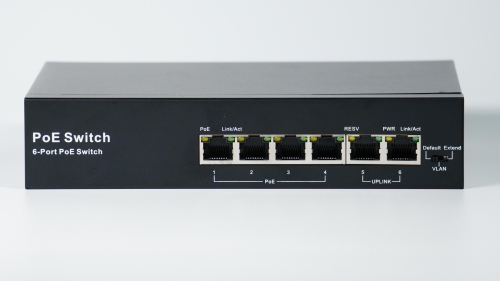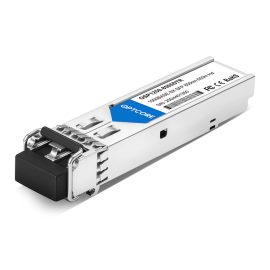Blog, Network Cabling
What is Industrial Ethernet: A Complete Guide
Ethernet is an essential network standard widely used in home, commercial, and office networks. However, in industrial settings, Ethernet must cope with more complex situations, requiring higher standards. We call this type of Ethernet, which is specialized for industrial environments, Industrial Ethernet.
This guide will explain industrial ethernet in detail and provide a complete understanding of it.
What is Industrial Ethernet?
Developed by Xerox in the 1970s, Ethernet has become the world’s most popular standard. Industrial Ethernet (IE) is an extended version of Ethernet for industrial environments. Unlike commercial Ethernet, IE typically faces harsh conditions, such as:
- Extreme temperature
- Vibration
- High humidity
- Electromagnetic interference (EMI)
- Dust
- Chemicals
- Long-distance
It must endure these rigors. It has the following features.
Environmental Adaptation
The components of Industrial Ethernet can withstand harsh conditions. They are generally IP67 or higher and can endure freezing and fire.
Fault Tolerance and Redundancy
Industrial Ethernet has redundant and fault-tolerant designs. Therefore, part failures will not affect the overall network.
Real-time
Industrial applications require real-time communications. Industrial production processes are precise. A slight delay or trouble can seriously impact the production line. Data transfer between devices must be real-time and specific.
Security
Security is essential in industrial environments. IE has a tight security system, including authentication, data encryption, access control, etc.
High-Quality Hardware
- Cable: double shielding (S/FTP or F/FTP) for anti-interference, meet industrial approvals such as UL, CSA, etc., and endure -40°C to +80°C.
- Connectors: RJ45 with IP67 connectors for light industrial environments. M12 connectors with IP67 and IP69K are compact, rugged, and threaded circular connectors for harsh environments. M8 connectors are IP67 and designed for limited space.
- Switch: support redundant power, ring network protocols, and PoE. The industrial switch has rich interfaces, including RJ45, SFP, serial interface, etc.

Flexible Network Topologies
Industrial Ethernet offers various network topology options. Common topologies include Star, Ring, Linear, and Hybrid topologies.
Power over Ethernet (PoE)
Power over Ethernet (PoE) technology transmits data and power over a single network cable. This technology can simplify cabling and cut costs.
The Four Major Communication Protocols of Industrial Ethernet
Industrial Ethernet extends the capabilities of Ethernet with specific protocols. The following are the four most commonly used protocols.
Modbus TCP
Modbus TCP is based on the traditional Modbus protocol. It transmits data over a TCP/IP stack. It is simple and easy to use, suitable for small-scale industries.
EtherCAT
EtherCAT is a real-time protocol that utilizes “on-the-fly,” extracting or processing data directly at the device node. Communication delays are microseconds for high-precision and complex scenarios.
EtherNet/IP
EtherNet/IP is a general industrial Ethernet protocol based on the Commercial Ethernet and TCP/IP. It is highly compatible and flexible for large-scale networks. However, Ethernet is not real-time, and EtherNet/IP faces latency problems.
PROFINET
Developed by Siemens, PROFINET is an advanced protocol in industrial Ethernet. It supports real-time and isochronous real-time networks, precise synchronization, diagnostic functions, and remote management. PROFINET is highly compatible and supports many network topologies.
Industrial Ethernet vs Commercial Ethernet
Environment Adaption
Industrial Ethernet adaptive harsh environments, such as high temperatures, vibration, and EMI. Commercial Ethernet adaptive regular environments, such as offices or homes.
Real-time Communication
IE focuses on real-time, low latency, and deterministic. Commercial Ethernet is “best-effort delivery,” allowing uncertainty.
Hardware Design
Industrial Ethernet has double-shielded cables, industrial connectors, switches with redundant power, PoE, etc. Commercial Ethernet often uses ordinary UTP cables, RJ45 connectors, and regular switches.
Network Topology and Redundancy
Industrial support Ring, Linear, Tree, and Mesh topology with redundancy design. Commercial Ethernet uses the star topology with no redundancy design.
Security
Industrial Ethernet has rigorous security systems, including VLAN, data encryption, intrusion detection, etc. Commercial Ethernet uses basic firewalls and simple encryption protocols.
Fiber Optics in Industrial Ethernet
Industrial fiber optics transmits data using optical signals. It is usually used in ultra-high-speed, long-distance, and high-interference scenarios. In the construction of Industrial Ethernet, fiber optics are often used in the following situations:
- As a backbone network
- Remote equipment connection
- High interference environment

In these scenes, Industrial optical assemblies are the core of the network. OPTCORE provides reliable components, including optical modules, fiber optic patch cords, Ethernet cables, etc., to fully support Industrial Ethernet buildings.
-
Cat8 Snagless Shielded (SFTP) 25G/40GBase-T Ethernet Network Patch Cable, PVC, Black
Price range: US$ 2.25 through US$ 28.80 (Excl. VAT)
OPTCORE is committed to providing customers with customized, flexible, cost-effective industrial fiber optic communication products to help build modern communication networks.
Industrial Ethernet Application Scenarios
IE is now widely used in many industries and fields.
1. Manufacturing and Automation
- Factory Automation: It connects devices, transmits real-time production data, and realizes automated production lines with high efficiency and collaboration.
- Robotic System: Support precise movements and real-time communication of industrial robots to enhance task execution efficiency and production flexibility.
- Automated Monitoring: Monitor complex production processes to ensure efficient coordination between production equipment and consistent product quality.
- Food and Beverage Processing & Packaging: Connect filling, packaging, and inspection equipment to ensure sanitary and efficient automated operations.

2. Energy and Utilities
- Distributed Energy Management: Enables data transmission between power stations and distributed equipment to optimize the efficiency of energy production and distribution.
- Power System Automation: Supports communication and scheduling between substation equipment to ensure power supply stability and efficient operation.
- Wind Power Generation System: Wind turbine equipment operation data is collected via IE, enabling remote monitoring and performance optimization.
- Water Treatment System: Monitoring water quality, flow rate, and other key data ensures water treatment facilities’ safe and stable operation.
- Natural Gas Pipeline: Industrial Ethernet connects sensors to monitor pipeline pressure and leakage risks to enhance safety.
3. Transportation and Logistics
- Traffic Signal Control: Industrial Ethernet transmits data between traffic lights and sensors to optimize traffic flow control.
- Railroad Signal System: It supports the real-time transmission of train scheduling and track signals to ensure safe and efficient railroad operation.
- Port Logistics Management: Realizes communication between cranes and transportation equipment to improve the efficiency of port cargo handling.
- Airport Baggage Distribution: Connects conveyor belts and scanners via industrial Ethernet to ensure fast and accurate baggage sorting.
- Intelligent Warehouse System: Supports communication and task scheduling of automated equipment to optimize storage efficiency and space utilization.
4. Agriculture and Special Applications
- Intelligent Agricultural Irrigation: Adjusts the operation of irrigation equipment based on soil moisture and weather data to optimize water utilization.
- Mining Automation: It connects mining equipment for remote control and efficient operations coordination to improve safety.
5. Medical and Healthcare
- Medical Equipment Interconnection: Connects equipment such as surgical robots and monitors to ensure high-precision operation and data transmission.
- Hospital Information Management: Supports the interconnection of hospital equipment and management systems to improve operational efficiency and service quality.
6. Smart Building and Facility Management
- Intelligent Building Control: Connects buildings’ security, air-conditioning, and lighting systems for comprehensive intelligent management.
- Intelligent Warehousing: Industrial Ethernet enables communication between automation equipment to optimize warehouse logistics scheduling and space utilization.
Conclusion
Industrial Ethernet is an improved version of Commercial Ethernet for industrial use. It offers better environmental adaptability, real-time communication, flexible topology, and higher security. It supports four main communication protocols and is widely used in various industrial fields. It is now a key technology in modern automation.
Reference:
Read More
- Optcore Industrial SFP Transceiver Solution
- PoE vs PoE+ vs PoE++ vs UPoE vs UPoE+: What is the difference?











